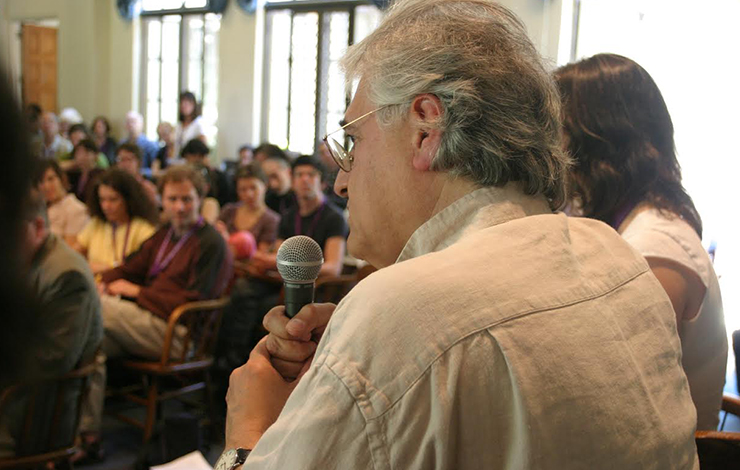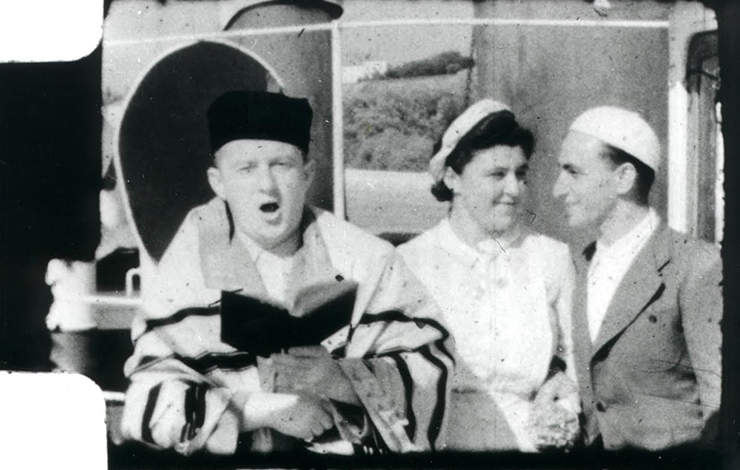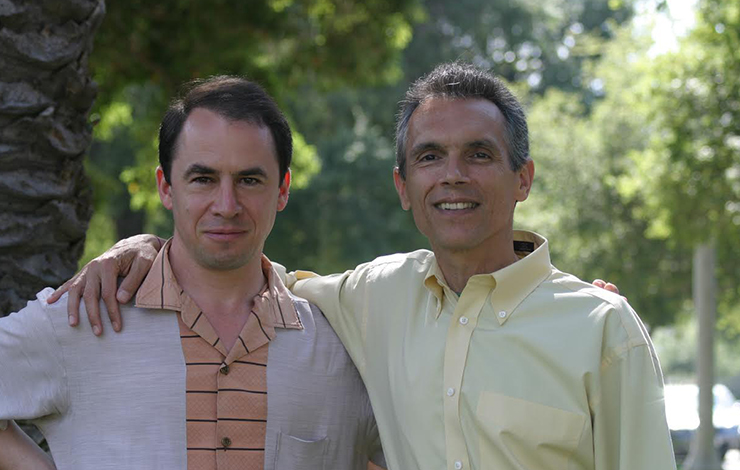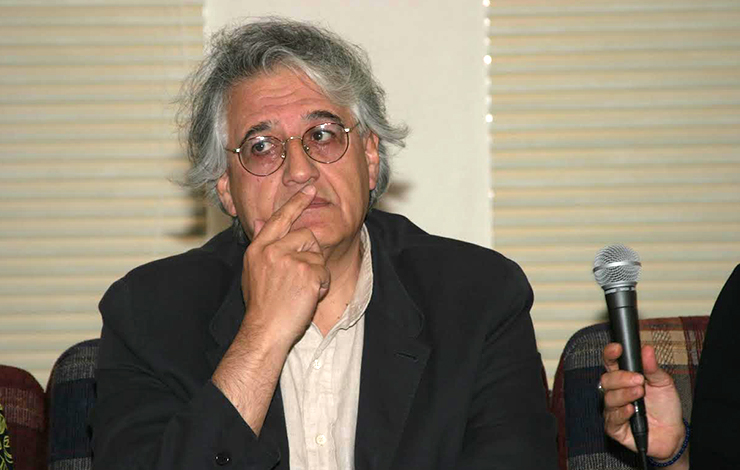
The Robert Flaherty Film Seminar, launched in 1955 by Frances Flaherty, four years after the passing of her legendary husband, has for the past 50 years served as a summertime sojourn into the conceptual catacombs of cinema. A weeklong gathering of 150 filmmakers, educators, scholars, students, programmers, curators, archivists and the occasional journalist, the Flaherty, as it is known, provides a context for new and old independent media from around the world, by filmmakers both established and emerging, to be screened and then discussed, debated and dissected.
This year's edition took place at Claremont College in California , the home of the Robert and Frances Flaherty Study Center . Curated by filmmaker Jesse Lerner, also an assistant professor of media studies at Pitzer College, and Michael Renov, associate dean and professor of critical studies at University of Southern California School of Cinema-Television, "Cinema and History: Piling Wreckage upon Wreckage" examined and explored, in many complex permutations, the relationship between media and history, the nexus of collective and individual memory and the filmmaker's responsibility to reclaim and revive history.
"You want a theme that's broad enough to allow you to range freely, but not so broad that it's not a theme," says Lerner "You want some kind of structure, some sort of line of thought, something that runs through the week that fits everything together. It allows for the kind of mix of different styles of work, different generations from different parts of the world. That was how I proposed that theme. Michael came in a little later."
Such established makers as Patricio Guzman (Chile/France; Chile, Obstinate Memory, 1997; Salvador Allende, 2003), Barbara Hammer (US; Resisting Paradise, 2003; History Lessons, 2000), Mark Harris (US; Into the Arms of Strangers, 2001), Peter Forgacs (Hungary; Mutual Analysis, 2004; E l Perro Negro, 2005; Danube Exodus, 1998) and William Greaves (US; Black Journal, 1968-70; Symbiopsychotaxiplasm Take 1, 1968; Symbiopsychotaxiplasm Take 2 ½, 2005) presented their work alongside that of such younger filmmakers as Rebecca Baron (US; okay bye bye, 1998; How Little We Know About Our Neighbors, 2005), Soon-Mi Yoo (South Korea; Ssitkim--Talking to the Dead, 2004; Isahn, n2004), Jean Marie Teno (Cameroon/France; Afrique, je te Plumerai, 1992; Colonial Misunderstanding, 2004) and Juan Carlos Rulfo (Mexico; El abuelo Cheno y otras historias, 1994; Del olvido al no me acuerdo, 1999). Of course, the work of Flaherty himself, in the form of home movies, color tests, outtakes and shorts, found its way into the program. And in keeping with the Flaherty tradition of conceptualizing outside the screen, the seminar included an installation from the Annenberg/USC Labyrinth Project, composed of five interactive works, and The Grey Automobile, an interdisciplinary media-performance piece.

Curating "Cinema and History" was an art unto itself, with each individual program--generally consisting of one to three films and an in-depth dialogue between filmmakers and the audience--logically and organically evolving from the preceding one. "It was a unique programming opportunity, in the sense that [when] you program a series for a film festival or a museum or a cinematheque, you can't be sure that everyone's going to be at all of the screenings," Lerner notes. "But here you've got a captive audience for the entire week. You can really develop a narrative line over the course of the week that unfolds in themes and variations. At certain points new ideas enter, things resonate across the week as well as across an individual program. It's a wonderful territorial set-up, in that sense. There's this process where we were exhuming or digging up the traumas of the past, coming to terms with them, reburying them, making peace, repatriating or apologizing. By the end of the week, you're comfortable enough with those fragments that you can play with them."
"It felt kind of intuitive," Renov says of the collaboration. "We never had to explicitly articulate; we just had to play off of one another and our instincts and our intuitions seemed to gel pretty well. We did on some occasions schedule time to sit down and look at where we were and see what the flow felt like and what kind of continuities and discontinuities and buildups there were. But a lot of it was fairly unspoken, which is somewhat surprising. But we worked together well enough and our instincts were really compatible."

The process of developing a Flaherty program like this one takes a year, with the curators coming up with a list of filmmakers and works, and presenting it to the advisory board of the board of directors, as well as to executive director Margarita De la Vega-Hurtado. Lerner and Renov enjoyed a relative autonomy, with the board making suggestions over the course of the year, and De la Vega-Hurtado contacting the filmmakers, raising money, acting as a go-between and advising the curators on other filmmakers or regions of the world they may have overlooked. "I also remind them of the spirit of the seminar, which is more the culture, the discussions, the ideas and not a festival," she says.
Indeed, with a daily program that runs from 7:30 a.m. (if you include breakfast) through morning, afternoon and evening screening programs and dialogues that continue through lunch, happy hour and dinner, to a libation-fueled conversation at Bill's Bar (the Flaherty watering hole) that meanders past the 1:30 a.m. closing time, the seminar may seem like a PhD program, without the publish-or-perish dictum. "People are not there to present papers and produce their knowledge but rather to participate and hear each other's opinions," De la Vega-Hurtado points out. "It's a much more congenial setting; it's a very egalitarian, participatory moment."
In her book The Odyssey of a Filmmaker: Robert Flaherty's Story, Frances Flaherty writes, "Non-preconception is the pre-condition to discovery, because it is a state of mind. When you do not preconceive, then you go about finding out." In this spirit, a central Flaherty tradition is to keep the program and its individual components under wraps until just before a given screening, thus enabling the viewer to engage the work purely on its own terms, and to participate actively in the ongoing narrative.

From the curator's perspective, Renov does see some parallels with academia: "At Flaherty you have an audience that you don't know in advance, just like you don't know who's going to enroll in your class. But once people show up and you've got them for a period of time, then you see that there's a certain dynamic that builds up within the group, and things can go in different directions. You can help them go in different directions, but you also have to be sensitive to the kinds of curves and concerns that develop over time. There are some real consistencies and parallelisms--being able to imagine your audience and possible reactions that might include different kinds of politics, different kinds of aesthetics, different ethical concerns."
Beyond the seminar, the Flaherty screens selected programs at such sites as the Museum of Modern Art in New York , the National Gallery of Art in Washington , DC , and, in collaboration with the Black Maria Film and Video Festival, tours works by artists who have been featured at the seminar. According to De la Vega-Hurtado, the Flaherty would also like to develop, with the proper funding, education programs for young people, as well as an international exchange program.
While this year's seminar may have lacked the storied contentiousness that apparently figured in some previous editions, one came away this year with a renewed sense of intellectual rigor and a deeper engagement with the cinematic process.
Thomas White is editor of Documentary magazine.
